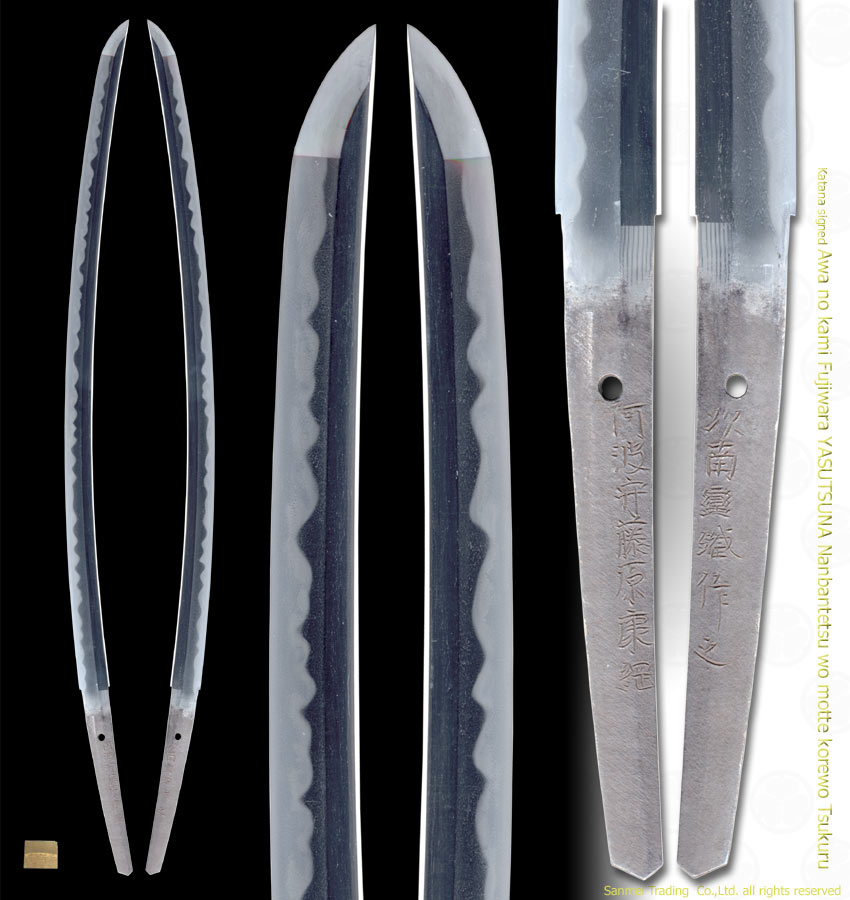Length of cutting edge70.5cm Curvature2.6cm Width of base31.6mm Thickness of base7.5mm Width of Yokote22.7mm
Kitae(forging pattern) : Kitae is tight and fine ko-itame with a growing small blinking ji-nie granules and small darkish chikei activity. There is an irregular jinie granules that generates a indication of Midare-Utsuri reflections over the hiraji. The surface of Shinogiji is strong Masame hada. The entire jigane is finely and strongly forged.
Hamon(tempering pattern) : Hamon is fine nie (delicate and uniform sparkling granules) based small gunome and choji clove outlines that varies in height and mixture with combination of togari sharp outline hamon. The interior of temper has an activity of streaming sunagashi and thick nie lines so called Ginsen and thick nie based clove feet toward the cutting edge. Upper the blade, stronger Nie and upper monouchi area has extremely strong nie/nioi creating some spot temper marks and overflowing Yubashiri metal granules into the hiraji.
Boshi (tip): Boshi is irregularly short wave and streaming brushing marks (sunagashi) in front and the ura, similar indication but with double tempered marks with hakikake brushing ends.
Nakago(tang) : Nakago is UBU (unaltered). One peg hole. Osujikai file marks and V-heel shape.The signature which is chiselled in front reads as Awanokami Fujiwara YASUTSUNA and the reversed side states that nanbantetsu wo motte korewo tsukuru (forged with an imported steel).
During the passage from Keicho (momoyama) to the middle of Edo period in 17th century, The shape of Uchikatana had been transformed, especially as a reaction of kanbun shinto style which was straight and shallow curved sugata, the relatively deep curved katana had come into a major standard. According to the sword smiths directory, YASUTSUNA with Awanokami title was from Oumi province and had moved to Osaka in his later period. he belonged to Oumi-Ishido school and had close relation with a famed smith Tatara Nagayuki who had created a reproduction of Bizen works during Koto period. The workmanship of this beautiful katana indeed has a close resembles to a work of Bizen Osafune family, furthermore temper starts with gunome from the base whereas many of Ishido smiths shows straight temper line on base so called Yakidashi and shows Bizen Midare Utsuri, too.
Probably it is guessed that Yasutsuna should have a strong influence by a Bishu Osafune Sukesada while forging this sword.
Gold double layer habaki collar, Shira-Saya plain wood mounting (sayagaki written by Sato kanzan sensei)
